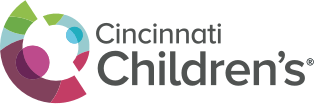Frequently Asked Questions

Frequently Asked Questions
If you or your child are thinking about enrolling in the Discover Together (DT) Biobank, it’s important you feel like all your questions have been answered before you decide.
Below, you’ll find answers to the most common questions our team receives. If you need more details that aren’t provided here, don’t hesitate to contact us.
Questions About Enrollment
Biobank participation is free, and nearly anyone can join. We routinely enroll patients of all ages, as well as juvenile and adult family members and individuals from the Greater Cincinnati community.
You can participate regardless of your medical history or health status. We need samples from healthy people as well as those who require medical treatment.
Cincinnati Children’s is home to one of the largest pediatric research facilities in the United States, meaning we have a lot of scientists conducting a lot of research. One of the ways they learn about human health and diseases—and find better ways to diagnose and treat diseases—is to analyze biological samples such as blood, saliva, urine and tissue.
We collect and store as many samples as possible so they’re available at the time our researchers need them. It’s also much more efficient for our researchers to use stored samples instead of collecting new samples from patients. For example, if a researcher needs blood samples from 20 teens with asthma, it’s much faster for them to request samples from our biobank than it is to find 20 patients who meet this criteria (and then schedule them for blood draws).
Yes. Participation in the DT Biobank is completely voluntary. You can withdraw yourself or a child under 18 years old at any time by emailing discovertogetherbiobank@cchmc.org.
We will ask if you want your samples destroyed, or if it’s OK to continue using them for “de-identified” research. This means the researcher would have no way of knowing who the sample was taken from.
Please note, you only can opt out of having your samples used in future research. If one of your samples was already used, we cannot get it back from the researcher who requested it.
No, you’re not required to give blood samples. Our researchers sometimes study other biospecimens, such as saliva or urine. However, blood samples usually provide the most information about human health and disease. And the more blood samples we have, the more studies our researchers can conduct.
Whenever possible, we collect research blood samples at the same time you or your child is scheduled to come in for a diagnostic blood test. This means we only need to perform a single blood draw.
Regardless of whether you choose to provide a blood sample, your participation in the DT Biobank gives our researchers access to important, de-identified medical record data and genetic data.
Because Cincinnati Children’s conducts a huge amount of research, we’ve had numerous biobanks throughout our history. Some of these biobanks were used to store samples from people with specific medical conditions. For example, one biobank may have had samples from people with neurologic conditions while another had samples from people with heart disease. The DT Biobank is different because the participants, their samples and their associated data are intended to support all research studies¬—not just research on specific diseases.
Over time, the DT Biobank aims to partner with these smaller, disease-specific biobanks here at Cincinnati Children’s. This allows us to create a much larger collection that all our researchers can access, regardless of their area of study. However, Cincinnati Children’s will continue to have some standalone biobanks, separate from the DT Biobank, that are used for specific research purposes.
If you enrolled in one of the other standalone biobanks, your samples may be used by researchers who have access to that specific biobank.
Regardless of which Cincinnati Children’s biobank you enrolled in, you can trust your samples will be used in a way that is consistent with our research policies. They will also be used for scientifically ethical, relevant studies.
Questions About Sample Analysis and Results
No. Medical research takes place separately from clinical testing (tests to diagnose or monitor a medical condition), and research-related testing is not linked to your medical record. You’ll likely never know whether any research-related tests have been performed using your sample.
However, in the rare case a researcher analyzes a sample and finds something that may require medical attention, that result would need to be confirmed with additional clinical testing—and only with your permission. Only the results of those additional tests would appear in your medical record.
Questions About Sample Use
Research into “genetics” and “genomics” is very common. It focuses on human cells and genes, including how and why they change and how they influence health.
By pinpointing how our genes contribute to good health—and disease—we can learn how to prevent, treat or cure many medical conditions.
Yes, however DT Biobank samples cannot be used unless a Cincinnati Children’s researcher is part of the study.
Our researchers often collaborate with scientists from other institutions—including other top pediatric medical centers around the country. For example, we might team up with these hospitals to investigate a rare childhood disease if, individually, we don’t see enough patients with that condition to study it. Learn more about one such collaboration, called the Genomic Information Commons.
Samples from the DT Biobank may be used in these types of multicenter studies as long as Cincinnati Children’s researchers also are involved.
Yes, but any outside researcher with access to DT Biobank samples or data must be part of a study conducted in collaboration with Cincinnati Children’s.
Our researchers often team up with scientists from other private and nonprofit institutions, because our combined expertise helps accelerate new findings and treatments. Samples from the DT Biobank may be used in these studies.



